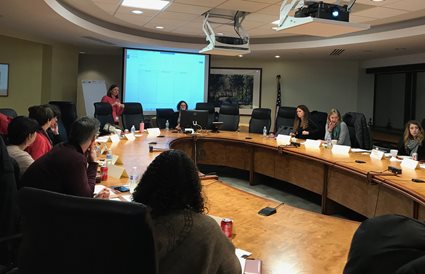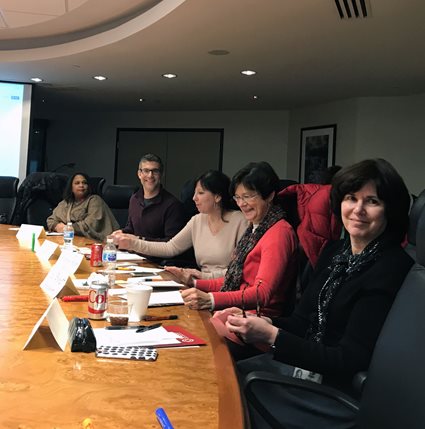 The University’s Blindness and Low Vison Studies (BLVS) program recently formed an Interprofessional Steering Committee (ISC) to prepare and guide professionals for the real world. This committee, with representation from multiple disciplines, including Optometry, Occupational Therapy, Speech-Language Pathology, and teachers of children with visual impairments, school administrators and, most importantly, a significant number of families of children with visual impairments was originally initiated to provide high quality education and rehabilitation.
The University’s Blindness and Low Vison Studies (BLVS) program recently formed an Interprofessional Steering Committee (ISC) to prepare and guide professionals for the real world. This committee, with representation from multiple disciplines, including Optometry, Occupational Therapy, Speech-Language Pathology, and teachers of children with visual impairments, school administrators and, most importantly, a significant number of families of children with visual impairments was originally initiated to provide high quality education and rehabilitation.
According to Dr. Fabiana Perla, chair of the Department of Blindness and Low Vision Studies, “the motivation behind the Families as Faculty program was to find a way for our students to connect with the real world and to make sure that our students are receiving first hand experiences.” The BLVS committee sought to bridge the gap between education and services so students can become comfortable working with families as early as possible.
A main focus of the program and committee is children with Cortical Visual Impairments (CVI). CVI is a visual impairment not primarily caused by the eyes. The eyes, for most of these children, are fine. According to Dr. Perla, the children have 20/20 vision and full visual fields but are still visually impaired because the problem is with processing the information in the brain. CVI is the leading cause of visual impairment in the developing world because it is often difficult to diagnose and therefore treatment early on is hard to find. “We are making it our emphasis because we really need to prepare our students to address the needs of this population in ways that we have not yet,” Dr. Perla said.
 The involved families have become extremely interactive with the students as well as other family members. And, they have had to educate themselves and have done so through attending conferences and seminars. The committee will hold periodic meetings, the first of which took place recently, and will include the exchange of resources and information for the FAF program. As a result, a community with a vast amount of resources and knowledge is being built.
The involved families have become extremely interactive with the students as well as other family members. And, they have had to educate themselves and have done so through attending conferences and seminars. The committee will hold periodic meetings, the first of which took place recently, and will include the exchange of resources and information for the FAF program. As a result, a community with a vast amount of resources and knowledge is being built.
“In the end, the goal of this program is to prepare our students to work in an interprofessional environment that includes families as part of the circle, and for the families, we want to provide the best possible services for their kids,” Dr. Perla said.